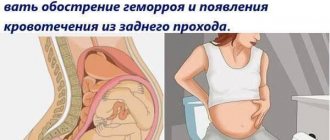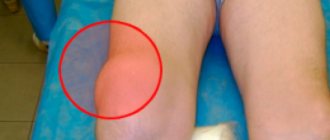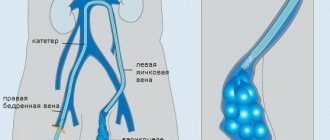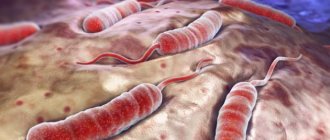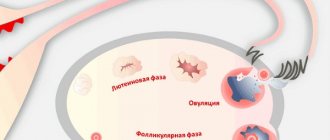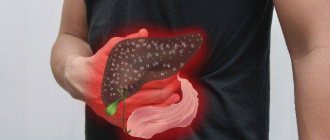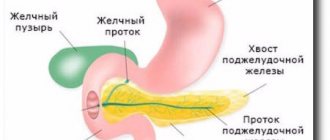What are hemorrhoids
Hemorrhoids (from the Greek haima - “blood”, roe - “flow”) are one of the most common diseases in proctology, which is based on the pathological condition of the cavernous plexuses of the rectum, accompanied by stagnation of blood in them. Hemorrhoids are manifested by periodic bleeding from the nodes, their prolapse from the anal canal and frequent inflammation. Men and women are equally susceptible to hemorrhoids
Classification of hemorrhoids
Internal hemorrhoids. With internal hemorrhoids, there are varicose hemorrhoidal veins, which are located deep in the anal canal, so such hemorrhoids are not visible during a normal examination. In order to see them, you have to resort to special research methods: anoscopy, rectoscopy. Also, such nodes can be identified during digital rectal examination. Such a sign of the disease as prolapse of hemorrhoids can cause bleeding when they are injured during the act of defecation. With significant weakness of the ligamentous apparatus of the rectum, such nodes fall out during defecation or significant straining. In addition, the internal nodes, when they fall out and spasm of the anal sphincter, can be infringed. Most often, the first signs of internal hemorrhoids are bleeding.
External hemorrhoids. In this type of hemorrhoid, the hemorrhoids are marked externally and should not be confused with prolapsed internal hemorrhoids. Most often, external nodes manifest as thrombosis. As a rule, bleeding from external nodes does not occur, since they are not injured during defecation. Such hemorrhoids hurt and cause discomfort during bowel movements. But constant stagnation of blood in them can lead to the formation of blood clots in them. Externally, the external hemorrhoidal node can be of different sizes, from 3 mm or more, which depends on its blood supply. An external hemorrhoid is usually covered by skin, while a prolapsed internal hemorrhoid is usually covered by the mucous membrane of the anal canal.
Combined hemorrhoids. As the name implies, with combined hemorrhoids, the patient has a combination of external and internal hemorrhoids.
The occurrence of hemorrhoids
Normally, all people have external and internal hemorrhoidal venous plexuses under the mucous membrane of the anal canal, which are similar in structure to the cavernous tissue of the genital organs. They play a significant role in retaining intestinal contents, ensuring complete closure of the anal canal when they are filled with blood. As a result of the influence of a number of factors, most adults experience an increase in hemorrhoidal nodes, and hemorrhoids begin to develop.
Factors influencing the development of hemorrhoids: constipation, straining; pregnancy, childbirth; hereditary factors; sedentary lifestyle; prolonged standing or sitting; excessive physical activity; practicing some sports (horse riding, cycling, weightlifting); lifting weights; overweight; hot, spicy food; drinking alcohol; prolonged exposure to heat (sauna, hot bath); prolonged diarrhea (diarrhea).
Reasons for the development of the disease
Male hemorrhoids, like female hemorrhoids, are associated with congestion in the venous plexuses of the rectum. But certain factors (or a combination of them) can provoke its further development.
Among the most common “provocateurs”, due to which the disease progresses, proctologists name the following factors.
- Difficulty with bowel movements. Very often, hemorrhoids occur in men due to their passion for meat products, which clog the intestines and lead to constipation. And, on the contrary, rare representatives of the stronger sex consume vegetables and fruits containing fiber in the required quantities.
- Passive lifestyle. The work activities of many modern men are not characterized by mobility, and this is fraught with stagnation of blood in the venous plexuses of the pelvic organs. Truckers, office workers and programmers are especially at risk. In addition, after sitting at the table for a good half of the day, men return home not on foot, but by car. Hence the risk of developing hemorrhoids.
- Age. Age-related changes in the body often lead to thinning and weakness of the walls of venous vessels. If in women this manifests itself in the form of varicose veins, then in the stronger half of humanity it manifests itself in the form of bleeding hemorrhoids.
- Alcohol abuse. A similar reason is typical for male patients. It just so happens that men are often overly addicted to alcohol, which is reflected in the expansion of hemorrhoidal veins and increased blood flow. The stronger the drinks, the more pronounced the stagnation.
- Lifting heavy objects. Males who work as loaders or are fond of weightlifting are especially at risk. When lifting weights, there is even a possibility that hemorrhoids will fall out.
- Inflammation of nearby organs. Due to its anatomical features, the anal canal in men is located adjacent to the bladder and prostate gland. Inflammation that occurs in these organs can spread to the rectum and provoke inflammation of the venous plexuses.
- "Non-standard" sex. Anal sex can also provoke hemorrhoids. As a result of such proximity, microscopic injuries to the rectum and thrombosis of the veins occur, which leads to inflammation of the venous collections and, as a consequence, to an increase in hemorrhoidal nodules.
Since the causes and treatment of hemorrhoids are closely related, getting rid of its symptoms is quite difficult. Not every man wants to give up bad habits or change his current way of life. That is why many representatives of the stronger sex prefer to endure unpleasant symptoms rather than go to a proctologist.
Preparing for surgery
Preparation for the removal of enlarged hemorrhoids includes carrying out all necessary diagnostic procedures and cleansing the intestines before surgery.
Therefore, two to three days before surgery, you should avoid foods that contribute to the formation of gases in the intestines. The sanctions include beans, beans, peas, peanuts, brown bread, fresh vegetables and fruits, juices, cabbage in any form, mineral water, carbonated and alcoholic drinks.
The day before surgery, it is better to switch to a slag-free diet (fermented milk products, eggs, dietary meat). A light early dinner is indicated. On the morning of surgery, you will have to refuse food.
In the evening, it is necessary to cleanse the intestines with a cleansing enema or use a laxative such as Fortrans, which is taken according to the instructions attached to the drug.
Classification
Hemorrhoids are divided into three types depending on the location of the inflamed vessels:
- External type - hemorrhoids are located under the skin around the anus,
- Internal type - hemorrhoids are located under the mucous membrane of the rectum 3 cm above the anus,
- Mixed type - hemorrhoids are located both under the intestinal mucosa and around the anus.
Provoking factors
To protect yourself, it is important to know why hemorrhoids appear. There are several provoking factors. Some of them concern almost every man. So, the main causes of hemorrhoids:
- poor nutrition;
- passive lifestyle;
- excessive drinking;
- regular lifting of weights;
- chronic constipation;
- some diseases (protracted bronchitis, neoplasms in the pelvic area, etc.).
Also among the causes of hemorrhoids are heredity and age-related physiological changes. And if these factors cannot be excluded from your life, then all the others are real. Then the risk of getting sick will not be so high.
The first signs of hemorrhoids in men
For a disease such as hemorrhoids, it is best to go to the doctor after the first signs of enlarged hemorrhoids appear. Effective therapy in the early stages of the disease is possible using conservative methods. The first symptoms of hemorrhoids may be vague.
The following primary symptoms of hemorrhoids in men can be identified:
- sensation of a foreign body in the rectum;
- feeling of incomplete bowel movement after bowel movement;
- redness of the skin around the anal sphincter;
- slight burning sensation;
- increased secretion of mucus.
Already in the early stages of the development of the pathological process, many men experience discomfort in the anal area. If measures are not taken to prevent further development of the disease, the clinical picture gradually worsens.
Diagnostics
Diagnosis is carried out by a proctologist. The primary diagnosis is made on the basis of data obtained during an objective examination of the patient, as well as a digital rectal examination. In order to clarify the diagnosis for internal hemorrhoids, sigmoidoscopy and anoscopy are performed. If the data obtained is not enough, a colonoscopy method is used. In some cases, an X-ray examination of the colon with contrast is performed.
According to various sources, the prevalence of pathology among the adult population is 20–80%.
For bleeding from hemorrhoids, angiography may be required.
Differential diagnosis with rectal tumors, secondary syphilis, paraproctitis is necessary. The early stages of hemorrhoids are similar to some helminthiases.
Rectoscopy and anoscopy are used to diagnose hemorrhoids.
TOP 10 symptoms of hemorrhoids
At the first signs of hemorrhoid symptoms, men tend to ignore them. As a rule, they try to ignore the discomfort and itching that is felt at first. The subsequent sensation of a foreign body in the anus, associated with the growth of the venous network, is also not given much importance, preferring to endure the unpleasant feeling. Only when serious pain and bleeding occurs during bowel movements does the patient decide to seek help.
Let's take a closer look at the TOP 10 main symptoms of hemorrhoids in men:
- Pain syndrome. A constant companion for a man with hemorrhoids. Initially, there is minor pain in the anal area. A man experiences discomfort when defecating. At rest there is no pain. As the disease develops, the manifestation becomes more pronounced. Pain appears at rest, when trying to change body position. The nature of the discomfort is burning, pulling, aching. The intensity varies from patient to patient. In later stages the syndrome is always pronounced
- Bleeding from the rectal area. In the early stages of hemorrhoids in men, bleeding is minimal. There is a small amount of blood on toilet paper. As you move forward, the bleeding becomes more and more intense. In the final stages, death may occur due to blood loss.
- Change in color of stool. An alarming symptom. It must be borne in mind that a change in the shade of stool does not appear only with hemorrhoids. This is a typical symptom of rectal cancer (colorectal tumors). In order to distinguish and recognize hemorrhoids from cancer, you need to take a closer look at the stool. In the first case, the blood envelops the stool and looks fresh and has a scarlet tint. In the second, the stool darkens, becomes black or dark. The blood seems to be woven into the structure of the stool, creating characteristic veins.
- Formation of compactions in the rectal area. They develop due to the formation of hemorrhoids. May not be visible to the naked eye. Seals are an important diagnostic sign.
- Development of visible hemorrhoids in the anal area. The bumps can be located either in the lumen of the lower rectum or extend beyond its limits, ending up in the external environment. Often such nodes need to be realigned.
- Hyperemia (redness) of the skin of the anus. Caused by irritation of the delicate skin of the rectal area.
- Discharge of mucus from the rectal area. It is caused by increased production of a special secretion by the rectum. The body falsely mistakes the nodes for feces and tries to evacuate them faster.
- Itching and feeling of a foreign object in the rectum. Explained by the presence of nodes in the intestinal lumen. In the early stages, the manifestation does not cause the patient almost any discomfort.
- Increased body temperature. Possibly with acute hemorrhoids. We are talking about low-grade thermometer readings (37.5-38 degrees).
- Symptoms of general intoxication of the body. Including headache, dizziness, bone aches.
Symptoms overlap each other, creating a characteristic clinical picture.
Ointments, gels and creams
It is more advisable to use ointment for hemorrhoids in the external form of the disease. There are many effective remedies on pharmacy shelves today. Here are the most popular:
- Relief. The ointment is recommended in cases where the pain syndrome is very pronounced. It has no contraindications (it is even prescribed to pregnant women).
- Ointment based on methyluracil. Heals wounds quickly. Particularly relevant after surgical interventions. Refers to completely synthetic drugs. Methyluracil ointment is used not only for hemorrhoids. By the way, not only men. It is also widely used in the treatment of various diseases in gynecology.
- Ketoprofen. Prevents platelet aggregation. Relieves pain. It is one of the most inexpensive and effective ointments for hemorrhoids. It costs only about 80 rubles.
- A very effective agent that has anti-inflammatory, drying, and disinfecting properties is sulfur ointment. In the early stages it can completely cure the disease. Primarily used as a healing ointment.
- Ointment Posterizan. Eliminates symptoms such as burning, itching and pain. It also promotes rapid healing of cracks.
- Proctosan. This remedy is very popular in proctology. It is often prescribed as first aid for hemorrhoids, since the ointment instantly eliminates pain.
- Venozol. Another inexpensive ointment for hemorrhoids. Its cost starts from 100 rubles. Also available in gel and cream forms. Acts as a venotonic.
- Cheap cream-wax called “Zdorov”. Contains ingredients of plant origin, as well as bee products.
- Doxiproct (erroneous version of the name - Doxiprost). Indicated for very severe pain syndrome. Works as a good anesthetic.
Attention! It is difficult to say which product is the leader in the ranking of ointments, creams and gels for hemorrhoids. Much depends on the specific situation. Therefore, a doctor must prescribe medications.
Stages of hemorrhoids with photos
From the onset of the first symptoms to serious clinical manifestations of hemorrhoids, several months or several years may pass.
First stage
The initial stage of the disease occurs without serious exacerbations and does not cause concern in men. Small nodes located inside are invisible, and the emerging bumps of external nodes do not attract attention. Signs of the first stage are discomfort in the anus (wetness, itching), blood on toilet paper.
Second stage
As hemorrhoids grow, the pain increases. Constant irritation of the skin of the anus with inflammatory fluid leaking from the intestine increases the burning and itching. Pain and sensation of a foreign body appear in the rectum. Bleeding is accompanied by almost every bowel movement, and the blood can even flow in a trickle.
It is possible for hemorrhoids to prolapse outwards, but after defecation they usually go inside on their own.
Third stage
The persistence and intensification of the symptoms of the second stage is complemented by a number of complications:
- prolapse of nodes during physical activity;
- prolapsed nodes do not correct themselves;
- thrombosis or strangulation of the node is possible.
In the latter case, surgery may be required.
Fourth stage
Incessant itching, burning in the anus, constant pain. It is impossible to reduce hemorrhoids; all acts of defecation are accompanied by severe bleeding. The result of infection on the wounds is the beginning of purulent processes.
Another “male” feature is delaying visits to the medical office as much as possible. Representatives of the stronger sex are more afraid and embarrassed by doctors than women. Therefore, they seek help when “it can’t get any worse.”
Preventive actions
The most reliable method to avoid hemorrhoids is prevention:
- Normalize your diet - eat more fiber, moderate the amount of hot and highly spicy foods, exclude fried, pickled, smoked foods. Try to drink at least 2 liters of water per day.
- Give up bad habits - alcohol and nicotine addiction quickly lead to degeneration of the vascular walls.
- Make it a rule to alternate sedentary work with small warm-ups - five-minute exercise sessions will help speed up the blood and eliminate congestion in the pelvic organs. If possible, practice walking.
- Be careful with weight machines and heavy lifting in general. In the first case, be sure to consult with experienced trainers; in the second, resort to the help of special devices or human assistants.
- If you have constipation, try to avoid forceful pushing. It is safer to use a laxative and lubricate the anus area with Vaseline or baby cream to a depth of 2 cm to facilitate the process. After that, return to item 1 of this list.
Men should remember that there are no health benefits to enduring pain and discomfort. While timely assistance from a doctor will help to avoid unnecessary complications that can lead to even more serious troubles than banal hemorrhoids.
What will happen if left untreated?
If you start treatment in a timely manner at an early stage, you can avoid complications and unpleasant consequences that make a person’s life unbearable. But if you ignore the symptoms and do not take any measures, then hemorrhoids can turn into serious and dangerous diseases.
The results of inaction may be as follows:
- Cracks in the anal canal. If you do not pay attention to the burning and itching in a timely manner, the disease gradually progresses into subsequent stages, at which cracks form, serving as a gateway for various infections. If infections penetrate into the cracks, purulent inflammation forms.
- Pinching of venous nodes. In the final stages, the nodes often fall out, causing them to become pinched. This is fraught with acute pain and severe tissue inflammation, which leads to necrotic processes.
- Acute thrombosis. Hemorrhoids are also dangerous due to the formation of blood clots in the venous nodules of a man’s rectum. This process is always accompanied by severe pain. The treatment method in this case is emergency surgery to remove blood clots.
- Ulcerative colitis. The rectum is part of the gastrointestinal tract. There are cases when inflammation spreads from the lower part of the rectum to other parts of the large intestine. This process leads to the formation of ulcers of the mucous membrane and disruption of the entire gastrointestinal tract.
- Pararectal abscess. This is an inflammation of the subcutaneous fat near the anus. During exacerbations, inflammation is accompanied by ulcers, and a perirectal fistula can also form, as a result of which the infection enters the man’s body.
- Gas gangrene. If hemorrhoids have progressed to the stage of appearance of ulcers, then pus can penetrate into the pelvic area. This extremely dangerous disease can result in death for the patient.
- Problems with potency. Inflammation of hemorrhoidal vessels can spread to neighboring organs, including the testicles. In this case, sperm activity decreases. In advanced stages, this can lead to infertility.
Can hemorrhoids lead to rectal cancer: answers from experts
Neglect of hemorrhoidal disease, treatment of which is not started in a timely manner, can contribute to the development of severe complications. This is stressful for all organs and systems and causes a decrease in immunity. All factors as a whole sharply weaken the body, creating conditions for the development of oncology under the influence of unfavorable external conditions.
With frequent exacerbation of hemorrhoids, constant inflammation can affect the development of cells: they can degenerate and divide uncontrollably. Cases have been described of the growth of polyps, which, being benign formations, with constant trauma can develop into an oncological neoplasm. Most often this occurs with diffuse rectal polyposis.
Precancerous conditions, in addition to polyps, are:
- Crohn's disease;
- nonspecific ulcerative colitis;
- villous tumors of the intestinal epithelium.
How to treat hemorrhoids in men?
The choice of treatment tactics is made by a specialist, taking into account the stage and type of the disease. It is possible to distinguish between medicinal and surgical methods of getting rid of hemorrhoids, and the use of drugs is often used in the pre- and postoperative period.
Having determined how to treat hemorrhoids in men, the doctor additionally makes recommendations, which include:
- nutrition optimization;
- reducing strength physical activity and at the same time increasing general physical activity;
- giving up alcoholic beverages and smoking.
We recommend treating hemorrhoids as early as possible, putting aside the false sense of shame and embarrassment. The later you seek qualified help, the higher the likelihood of surgical intervention.
Postoperative period
After a traumatic surgical intervention, patients undergo rehabilitation in a hospital, where they follow all the instructions of the attending physician. Minimally invasive surgeries are performed on an outpatient basis, so all responsibility for their health falls on the shoulders of the patients themselves.
In order for the postoperative period to go smoothly, you should adhere to the following rules: • follow all recommendations of the doctor who performed the operation; • avoid physical activity; • monitor your stool (if necessary, use mild laxatives such as Duphalac); • exclude spicy, salty, smoked foods, as well as alcohol; • consult a doctor if suspicious symptoms appear (fever, severe bleeding, etc.).
Even with minimally invasive methods of intervention, postoperative pain syndrome may occur, which should be eliminated medicinally using drugs recommended by the attending physician.
Conservative treatment
To get rid of hemorrhoids in the initial stages, drug (conservative) treatment is used. It is carried out using medications of various types and degrees of impact.
1) Systemic medications. They have a complex effect on all systems of the body, helping it cope with the disease. As a rule, drugs in this category are available in the form of capsules or tablets. To combat hemorrhoids with a conservative treatment method, two types of drugs are used: non-steroidal anti-inflammatory drugs (NSAIDs) and venotonics.
- Venotonic medications help resolve congestion in the veins, tone and strengthen blood vessels. Such drugs can be prescribed both for prophylactic purposes and during treatment. The most effective and well-known brands include the drugs Phlebodia 600, Detralex, Ginkor Fort, Troxevasin.
- NSAIDs are designed to reduce pain and relieve inflammation. Drugs in this group have a serious side effect: they negatively affect the mucous membrane of the gastric walls. Among the most popular remedies are Diclofenac and Ketonal.
2) Medicines with local effects. These medications are aimed at providing a local effect on the site of the disease. They are produced in the form of suppositories or ointments.
Local medications have the following effects:
- relieve itching;
- soothe pain;
- reduce swelling;
- thin the blood, reducing the risk of thrombosis;
- accelerate metabolic processes in tissues, promoting their rapid regeneration;
- stop inflammatory processes.
Among the most effective local drugs is Relief, produced in the form of ointments and suppositories. The drug, the main component of which is shark liver, has an analgesic and anti-inflammatory effect.
To avoid the formation of blood clots, or to resolve existing blood clots, experts recommend heparin-based products, such as Hepatrombin G. It has an anti-inflammatory effect, eliminates swelling, soothes pain and promotes the resolution of clots.
The drug Proctosan, which is similar in action to Relief, in addition to a lot of positive effects, has the ability to defeat the disease in a very short time. However, it has many contraindications, so before starting use, you should definitely consult a doctor.
Nutrition
Following a special diet allows you to avoid constipation and frequent cases of acute cases of this disease. The patient must avoid eating heavy foods, as well as dishes high in salt and hot spices. In addition, you should avoid drinking alcohol. You should eat food in small portions 5–7 times a day. Dishes should be boiled, steamed or stewed.
Recommended products include:
- pearl barley;
- buckwheat;
- rice;
- barley porridge;
- wholemeal bread;
- lean meats and fish;
- vegetables;
- fruits;
- dairy products;
- compotes;
- jelly.
Be sure to drink at least 2 liters of water per day. Following a diet will soften stool and normalize stool.
See also: quick treatment of hemorrhoids at home.
Complications
A progressive disease in the absence of proper treatment usually leads to a number of complications, and they can hardly be called pleasant.
- Inflammatory processes localized in surrounding tissues. In some cases, this leads to paraproctitis, characterized by inflammation of the tissue around the rectum. This disease is a very serious complication; it requires immediate and quite serious treatment.
- Anemia. This disease develops with a long course of hemorrhoids, accompanied by heavy and regular bleeding.
- Cracks. This is the main cause of pain in hemorrhoids. It is worth remembering that anal fissures create ideal conditions under which all kinds of bacteria penetrate deep into the tissue and develop there. As a result, this phenomenon can cause an abscess. This is a limited purulent inflammation, accompanied by severe pain, fever and general malaise. If such a complication occurs, surgical intervention is required.
In older people, fecal incontinence and anal sphincter insufficiency may occur.
Folk remedies
Treatment of hemorrhoids at home can be carried out using folk remedies, but you need to understand that the medicines given by nature are not effective enough to completely cure the disease. Therefore, treatment with folk remedies must be combined with the use of traditional drugs prescribed by a specialist.
Let's consider the most popular and effective folk remedies for hemorrhoids in men:
- Cool baths with potassium permanganate. They help relieve inflammation well. A few grains of potassium permanganate should be dissolved in a glass of cool boiled water, poured into a basin and diluted with water so that it turns out to be slightly pinkish in color. Take sitz baths 2 times a day for 5 minutes.
- Sitz baths with calendula, chamomile, onion peel. To prepare them you need to take 2 tbsp. l. raw materials, add 4 liters of water, boil well and leave for 4 hours. Strain the resulting broth and add to the bath.
- Lotions with the juice of the tartar plant or a decoction of willow bark. They stop bleeding well, relieve inflammation, and have an antibimicrobial effect. 2 tbsp. l. pour 1 liter of water over the raw material, boil, let it brew for a while, strain. Apply lotions until the symptoms of hemorrhoids disappear.
- Homemade candles. These can be candles made from honey, decoctions of medicinal plants, raw potatoes, and even just ice. Such suppositories are natural and safe, quickly relieve pain and stop bleeding. It’s easy to prepare candles with herbs: roll small cylindrical molds out of paper, fill them with a decoction of herbs and put them in the freezer, from where they are taken out immediately before use. Potato candles are even easier to prepare - simply cut out with a knife. Honey suppositories are made from candied honey. For ease of use, place them in the freezer for a while.
- Natural ointments from propolis and mumiyo. The mummy is rubbed between the fingers, and the resulting powder is applied to the anus twice a day. Propolis ointment is prepared as follows: 10 g of propolis is mixed with 100 g of butter and heated for 10 minutes. The resulting mixture is filtered and cooled to room temperature. Apply to knots and fissures of the anus 2-3 times a day.
Hemorrhoids are a disease that can be easily treated if identified in time and consulted with a proctologist. There are many methods of treating this disease: medications, traditional medicine. To avoid hemorrhoids and its dangerous consequences, men need to adhere to the rules of a healthy lifestyle.
Application of candles
Modern remedies for hemorrhoids are also represented by a wide range of suppositories. Some of them have analogues in the form of ointments, gels, tablets and creams (for example, Relief). Effective hemorrhoid suppositories are:
- Neo-Anuzol. Inexpensive but high quality product. It has an anti-inflammatory, drying, and analgesic effect.
- Hemorrhoids. Effectively fights bacteria. Removes swelling and cramps. It is considered a powerful remedy.
- Proctosan. Relieves pain and itching. This remedy has also proven itself to be an effective anti-inflammatory suppository.
- Antihemorrhoids. The drug relieves almost all symptoms of the disease. Many patients of proctologists are well aware of these Indian suppositories.
- Nigepan. Inhibits the process of thrombus formation. Stops inflammation. Experts often prescribe these inexpensive and effective suppositories for hemorrhoids. But they must be used carefully: allergic reactions are possible. If they occur, treatment with the drug should be interrupted.
- Viburcol. Homeopathic remedy. Relieves inflammation, soothes, relieves pain.
- Ultraproct. Also has an anti-inflammatory effect. In addition, it is recommended to administer suppositories with this name when the pain is severe.
- Anestezol. Although the drug is considered allergenic, it fights the underlying disease well.
- Candles for the treatment of hemorrhoids with sea buckthorn oil. Activate the healing process of the affected intestinal mucosa. Recommended after surgery.
It is also difficult to name the best suppositories for hemorrhoids. It is necessary to take into account the individual characteristics of the patient and the specifics of the disease. Self-medication is not recommended.
Minimally invasive methods for removing hemorrhoids
If drug treatment at home does not bring results, and the symptoms only get worse, a decision may be made about surgical intervention. Today, the priority is minimally invasive techniques, which are characterized by speed of implementation and recovery, painlessness and effectiveness.
Hemorrhoids in men can be treated using the following minimally invasive techniques:
- Sclerosis. A special substance is injected into the venous collections, leading to the adhesion of the vascular walls and the descent of hemorrhoids. After some time, tissues subjected to slerosis die.
- Photo and laser coagulation. Such an intervention involves the impact of various types of radiation on hemorrhoids, as a result of which the vessels collapse and connective tissue appears in their place.
- Ligation with latex rings. One of the most effective techniques, which involves squeezing the base of the nodules with latex ligatures. As a result, the flow of blood to the vessels is disrupted, and the cavernous formations die.
- Disarterization. Another effective method of minimally invasive treatment of anorectal varicose veins. The surgeon ligates the arterial channels that feed the venous plexuses, after which the latter die off.
- Cryotherapy. This technique refers to getting rid of hemorrhoids using low temperatures. Exposure to cold destroys cavernous formations, tissue necrosis and death of nodules occur.
In this case, complicated hemorrhoids in men are treated with radical surgery. It is usually used at the last stage of the pathological process, when other methods do not bring relief and additional serious complications have arisen (thrombosis, bleeding, perirectal abscess).
Surgery to remove hemorrhoids is called hemorrhoidectomy. The classic type of operation is the Milligan-Morgan method, but there are some variations, for example, the Parkes and Longo techniques (the latter is called hemorrhoidopexy).
The radical nature of the procedure implies not only a serious intervention in the patient’s body, a long rehabilitation period, but also the possibility of complete relief from painful symptoms for many years or even forever.
Ligation with latex rings
Mortality statistics from hemorrhoidal disease in Russia
Statistics for Russia indicate that every year the number of deaths from hemorrhoids that develop into cancer is at least 5 million. Hemorrhoids have become a national disease in our country. In recent decades, the disease has been rejuvenating: severe complications are observed in young people. More than 75% of patients over the age of 25 experience this pathology.
Such figures are associated with social reasons: the medical examination system has been disrupted. This has led to the fact that every year the number of cases of the disease detected in the last stage, or at the time of complications, when surgery is already required for cure, is growing.
